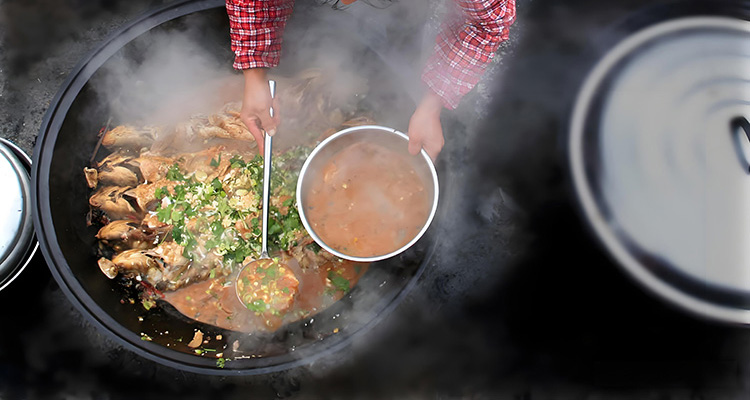Qingling Live Fish: Fresh Jilin Delicacy
1. Origins of Qingling Live Fish
Qingling Live Fish comes from Qingling Town, Jiaohe City, Jilin Province.
In 1986, Wang Xuan, the village Youth League Secretary, opened a small eatery along National Highway 302.
He served stewed Songhua Lake fish with tofu.
After years of experimenting, Wang and his partners created the famous “Qingling Live Fish.”
The dish combines fresh fish with wild mountain herbs.
Its unique taste quickly spread by word of mouth among drivers, establishing the “Qingling Live Fish” brand.
2. Cultural Significance
For Jilin locals, Qingling Live Fish is more than food—it is a cultural symbol.
People say: “If you haven’t tasted Qingling Live Fish, you haven’t truly visited Jilin.”
In 1997, the dish faced a trademark dispute and was registered by a Harbin company.
After a decade of legal battles, rights returned to Jilin.
Today, Qingling Live Fish represents local culinary tradition, wisdom, and resilience.
3. Ingredients and Special Features
Authentic Qingling Live Fish uses live fish from Songhua Lake, especially golden-scaled carp.
The most prized catch is the “opening river fish” in April and May.
These fish spend the winter under ice, consuming fat, leaving firm and flavorful meat.
The dish’s soul is the “ba hao” herb, a wild plant from local mountains.
It gives a subtle medicinal aroma, enhancing fish flavor and removing fishiness.
4. Cooking Process
The cooking process is very meticulous:
- Use a large iron pot over wood fire and add mountain spring water.
- Sauté ba hao with green onions, ginger, and garlic until fragrant.
- Add yellow soybean paste and stir-fry.
- Put in the live fish, boil on high heat, then simmer on low.
- Continuously ladle the broth over the fish so the herb aroma infuses evenly.
The entire process takes 30-40 minutes.
The broth thickens, and the fish fully absorbs the flavor.

5. Taste and Texture
The dish is fresh without fishiness and rich without being greasy.
Ba hao’s medicinal aroma blends with the fish’s natural sweetness.
Fish meat is tender and melts in the mouth.
Its aroma spreads instantly, making you want another bite immediately.
Every bite reveals layered flavors unique to Qingling Live Fish.
6. How to Enjoy
Authentic serving tips:
- Restaurants catch live golden-scaled carp from backyard ponds.
- At 80% cooking, tofu and wide vermicelli noodles are added.
- They soak up the fish broth, enhancing taste.
- Serve with rice for a complete traditional meal.
7. Where to Taste Authentic Qingling Live Fish
To find the best Qingling Live Fish:
- Visit Qingling Live Fish Street in Jiaohe City, with dozens of specialty restaurants.
- Try Qingling Yingbin Garden Authentic Live Fish Restaurant, praised for Songhua Lake fish and traditional cooking.
- Average cost: 70–100 RMB per person.
- Order by saying, “One live fish,” and the restaurant will catch it fresh for you.
8. Traveler Tips
- English name: Qingling Live Fish.
- Best tasting season: April-May, during the ice-breaking “opening river fish.”
- Qingling is near Songhua Lake, Qingling Forest Park, and Red Leaf Valley.
- After sightseeing, stop by local restaurants to enjoy the dish.
- Highways have special stops for Qingling Live Fish, convenient for travelers.

9. Simple Home Version
You can try a simplified home version:
- Buy fresh carp.
- If ba hao is unavailable, substitute with patchouli or mugwort leaves.
- Use mineral water instead of tap water.
- Sauté seasonings, add sauce, pour water, add fish, and simmer.
While it won’t match authentic mountain spring water cooking, you can still experience ba hao’s unique flavor.


